Curious what to do with fresh cleavers? Looking for some cleavers recipes? Let’s look at 5 ways to use fresh cleavers as a spring tonic.
Welcome to week 2 of our Spring Foraging series where it’s all using fresh cleavers!
Don’t forget to check out the rest of our Spring Foraging series if you missed it!
Spring Foraging Week 1: What I Found in My Backyard
Spring Foraging Week 2: 5 Ways to Use Cleavers
Spring Foraging Week 3: 5 Ways to Use Dandelion
Spring Foraging Week 4: 5 Ways to Use Plantain
Spring Foraging Week 5: 5 Ways to Use Stinging Nettle
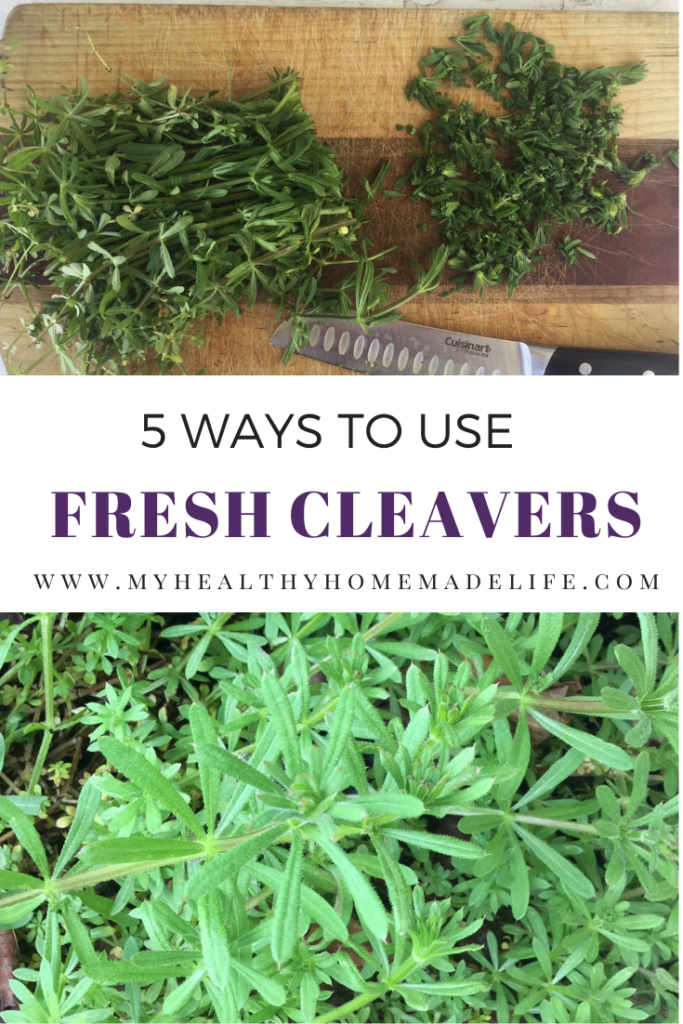
Does a picture of cleavers remind you of any plants you’ve seen before? Cleavers is widespread and pretty well know. It’s a plant I’ve seen around my whole life but always considered a weed until I started to study plants.
What stands out most to me about cleavers is how sticky and clingy it is–it tends to cling to neighboring plants or it will attach itself to a fence and grow vertically. If you pick some cleavers and touch it to your clothing, it will stick. Cleavers tend to grow in open fields, thickets, woods, and on shores where there are other plants to cleave to.
Cleavers is an abundant plant and easy to find and identify which makes it a great plant to get to know! Plus, cleaver’s has so many uses.
Cleavers as a Spring Tonic
In 1652, Nicholas Culpepper wrote this of cleavers:
“It is a good remedy in the Spring, eaten (being first chopped small, and boiled well) in water-gruel, to cleanse the blood, and strengthen the liver, thereby to keep the body in health, and fitting it for that change of season that is coming.”
Cleavers is known as being a traditional spring tonic for a couple of reasons. First, cleavers is what herbalists refer to as an alterative. Alteratives are herbs that gradually restore the proper function of the body and increase health and vitality. They move us toward better health.
One of the ways that alteratives can work is by improving the body’s ability to eliminate waste through the kidneys, liver, lungs, or skin. Cleavers does this through the kidneys–it is a diuretic which means it facilitates or increases urination.
Another reason cleavers is a great spring tonic is because it helps to improve lymphatic flow, which is important for a healthy immune system. After a long, cold winter, fresh spring cleavers is just the thing to get the lymph moving and eliminating waste and toxins from the body.
Cleavers is a gentle mover that is generally safe for most people and gentle enough to use frequently. When using cleavers (especially as food,) you will find the tips produced in early spring before it flowers are more tender and palatable.
Now let’s get into Cleaver’s uses.
5 Ways To Use Cleavers
You Can Use Cleavers as a Potherb
You can add cleavers to any of your cooked dishes, just as you might add some chopped fresh basil or oregano. I’ve experimented with this a bit, adding it to my soups and grain dishes. Although cleavers has a bit of a “green” taste when eaten raw, it mellows nicely when added to cooked dishes. Speaking of eating cleavers raw, I’d caution against adding any fresh cleavers to your salad or other fresh dishes. Cleavers has some tiny hooks which allows it to stick to so many things. These tiny hooks can get caught in your throat if you’re eating it raw and it isn’t chopped finely or pureed.
Here, I added 1/2 cup of minced cleavers to a big pot of soup and it was delicious! I’ve also added it to a pot of brown rice as it was cooking. It was an easy and delicious way to incorporate this herb into a meal.
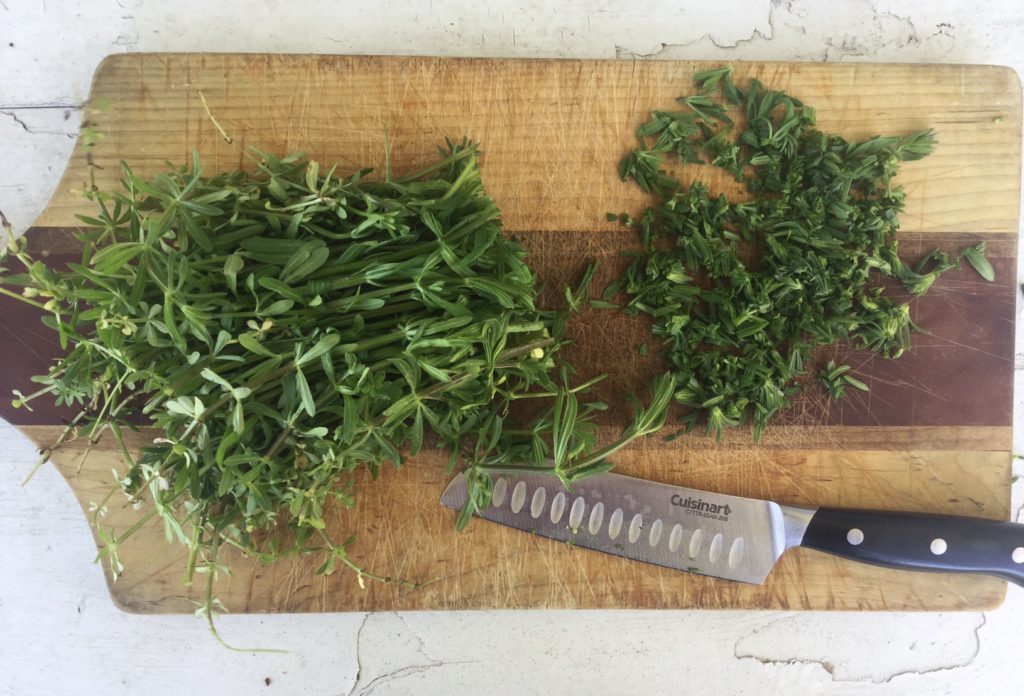
You Can Use Cleavers in Smoothies
Adding cleavers to your smoothies is another easy way to start incorporating this herb into your diet. Cleavers has a mild taste so it’s an easy addition to any green smoothie.
Spring is wonderful time of year to gather your greens for free. In addition to cleavers, I will often also add purple violet leaves, fresh nettle, chickweed and dandelion leaves to my green smoothies. Below is one of my favorite cleavers recipes, a Tropical Green Smoothie with Cleavers.
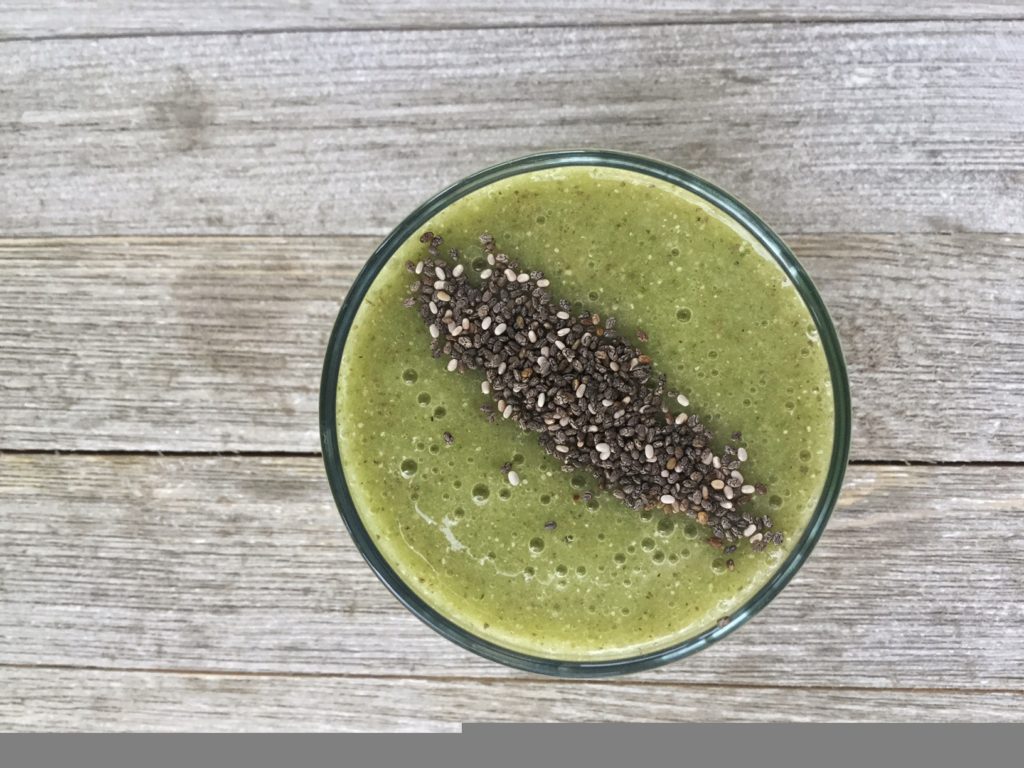

Tropical Green Smoothie with Cleavers
Not sure what to do with fresh cleavers? Try this delicious green smoothie! It the perfect way to get the benefit of those early spring foraged greens.
Equipment
- Blender
Ingredients
- 2 cups water
- 1 cup chopped fresh cleavers
- 1/2 cup fresh chopped pineapple
- 1/2 cup chopped fresh mango
- 1/2- 1 frozen banana (frozen in chunks)
- 1 tbsp chia seeds
Instructions
- Add all the ingredients to a blender and blend until smooth. Serve immediately.
You Can Make Herb Infused Vinegar with Cleavers
Because fresh wild greens are so plentiful, spring is the perfect time to make some herbal vinegar . Cleavers vinegar is easy to prepare and has many wonderful benefits!
Vinegar has the wonderful ability to draw minerals out of plants. I especially love using raw apple cider vinegar but if it’s not your favorite, you could substitute with red or white wine vinegar or balsamic vinegar.
One of my favorite ways to use Cleavers Infused Vinegar is in my homemade salad dressings. I simply substitute the cleavers vinegar for the lemon juice or vinegar in the recipe.
For more ways to use Cleavers vinegar, check out this post on making herbal vinegar.
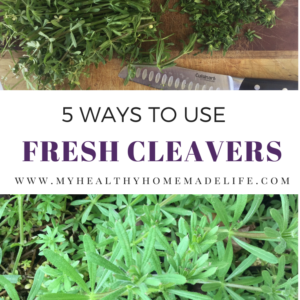
Cleavers Infused Vinegar
Spring is the perfect time to make some herbal vinegar because we can find so many many wild greens! Cleavers vinegar is easy to prepare and has many wonderful benefits! Try substituting cleavers vinegar for the lemon juice or vinegar in your homemade salad dressing. It’s delicious and so good for you!
Equipment
- Glass Jar with plastic lid
Ingredients
- part fresh cleavers (stems and leaves) loosely packed
- 2 parts raw apple cider vinegar or your favorite vinegar
Instructions
- Wash and prepare the herbs.
- Place herbs in a clean glass jar with a plastic lid and store in a cool, dark place for 4-6 weeks.
- After 4-6 weeks, strain the herbs from your vinegar and transfer your vinegar to a clean bottle. Don’t forget to label and date your herbal vinegar. Your herbal vinegar will keep for up to a year.
You Can Make Tea with Fresh Cleavers
Unfortunately, dried cleavers do not have a very long shelf life, especially compared to some other herbs so I prefer to use fresh herbs when making tea. In the cleavers recipe below, I show you how to prepare cleavers tea as a cold infusion but you could also prepare it with hot water as well.
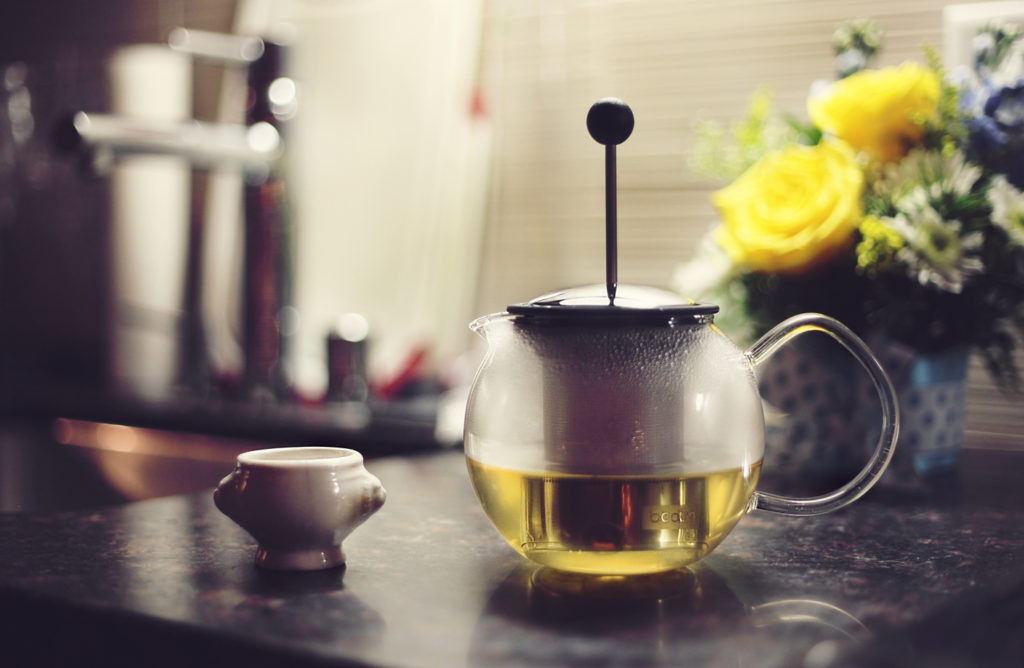
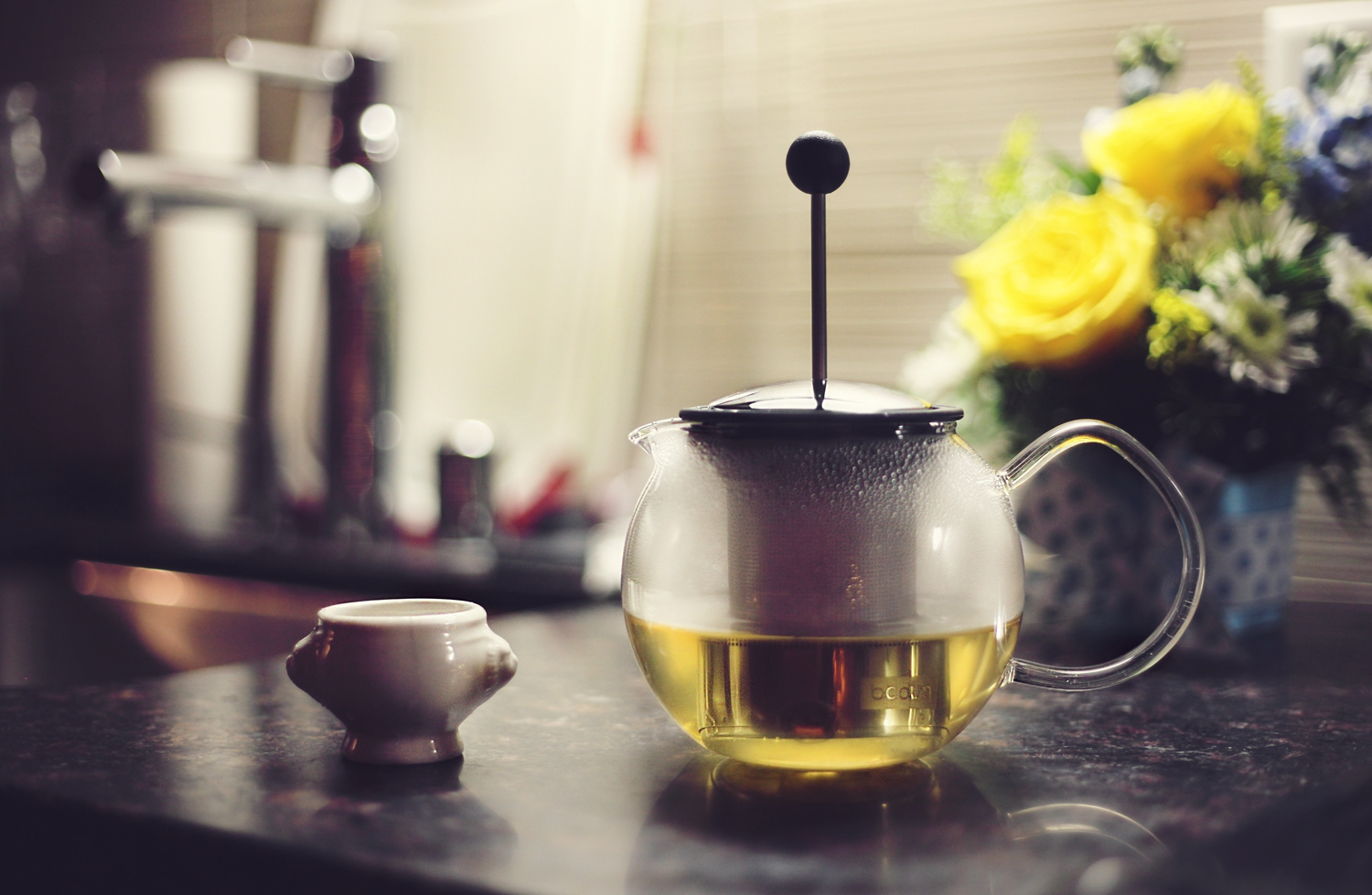
Cleavers Tea (Cold Infusion)
In this tea recipe, cleavers is prepared by using cold or room temperature water and letting it sit on the counter or in the refrigerator for 8-12 hours. It can be prepared at night before bed for a cup with breakfast.
Equipment
- teapot or glass canning jar with lid
Ingredients
- 3-6 grams chopped fresh cleavers
- 1 cup cold or room temperature water
Instructions
- Place your finely chopped herb in a teapot or glass canning jar and cover with water.
- Allow to sit on the counter for 8-12 hours. Strain, sweeten as desired and enjoy!
You Can Make Pesto With Cleavers
You no longer have to wait for summer to make fresh pesto! Cleavers makes a surprisingly delicious pesto! Simply substitute the cleavers for the basil in your favorite pesto recipe or use my favorite dairy free cleavers pesto recipe below.
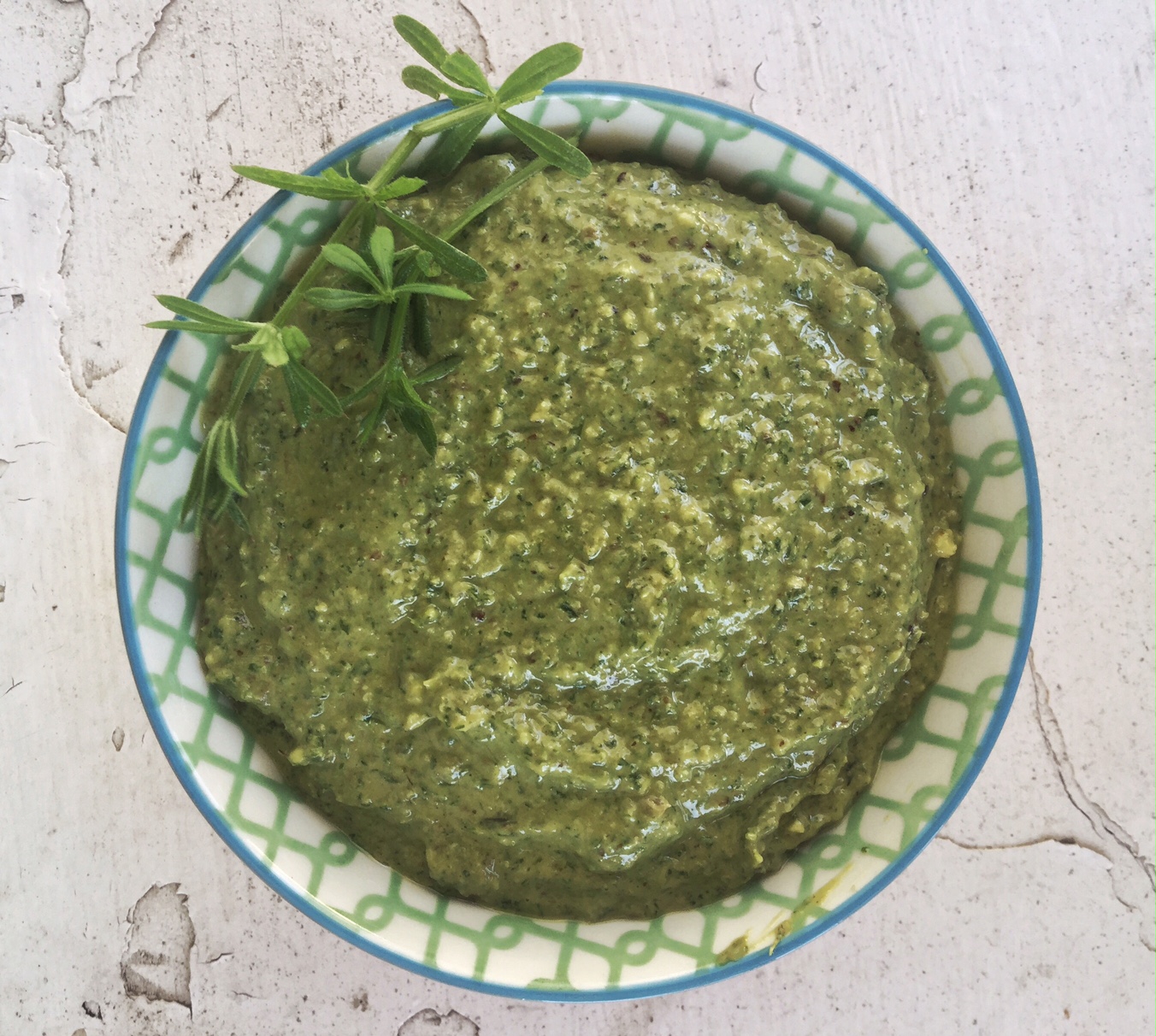
Cleavers Dairy Free Pesto
In this recipe, cleavers is substituted for fresh basil for a delightfully new spring flavor.
Equipment
- food processor
Ingredients
- 2 cups 2 fresh cleavers (stems and leaves,) packed
- 2 large garlic cloves
- 1/3 cup pine nuts or walnuts
- 1/4-1/2 cup olive oil
- 1/8 cup nutritional yeast
- pinch of salt to taste
Instructions
- In a food processor, process the cleavers, garlic, nuts, nutritional yeast and sea salt until coarsely chopped. Add olive oil and pulse until smooth.
- Serve immediately or store in a sealed container or glass jar in the refrigerator.
- If freezing, freeze individual portions in an ice cube tray until firm, then transfer to a plastic ziploc bag or freeze larger portions in a half pint glass jar with lid.
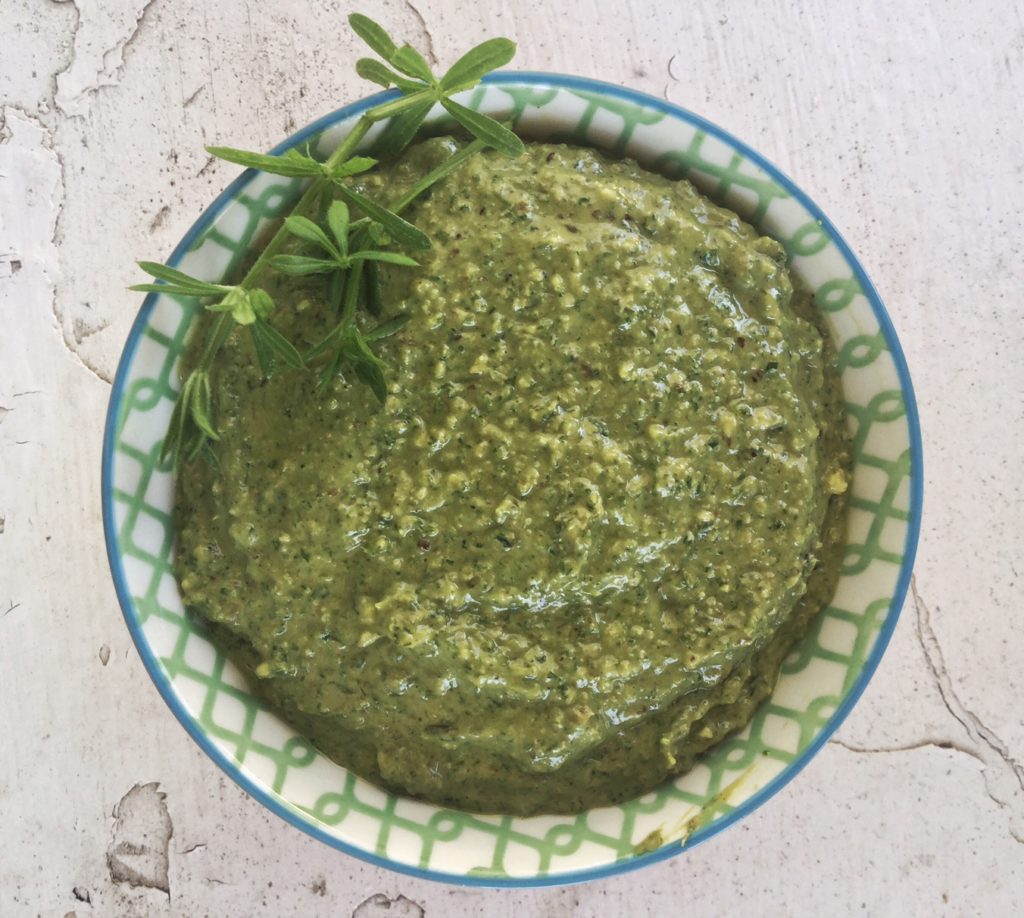
You Can Juice Fresh Cleavers
Cleavers would also be a nice addition to one of your fresh juice recipes. It does not product a lot of juice on it’s own, unless you have huge amounts of it, so I often just add it to my favorite juice recipe.
You could also “juice” or puree your cleavers in the blender and freeze in ice cube trays for later use in soups or smoothies.
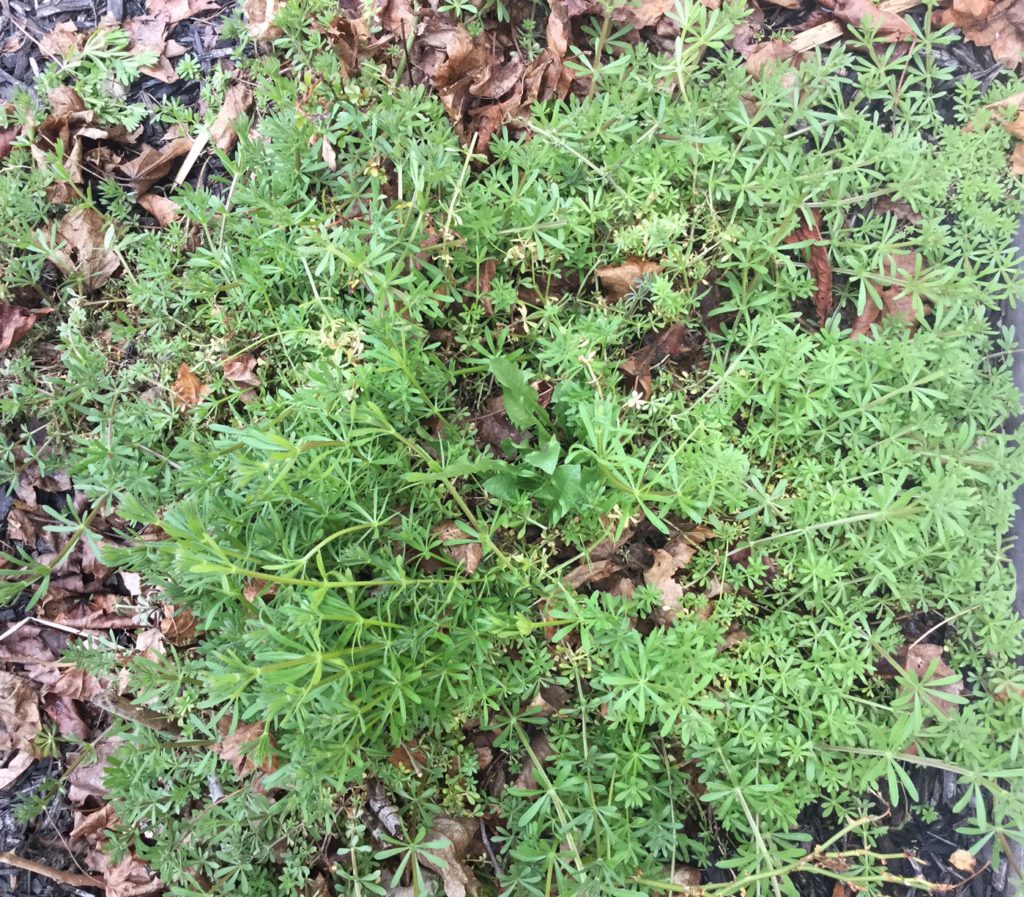
To download all the recipes from today’s post,
Plus, a BONUS RECIPE,
Click Here
Interested in how to use other spring herbs? Check out the other posts in our Spring Foraging Series:
Spring Foraging Week 1: What I Found in My Backyard
Spring Foraging Week 2: 5 Ways to Use Cleavers
Spring Foraging Week 3: 5 Ways to Use Dandelion
Spring Foraging Week 4: 5 Ways to Use Plantain
Spring Foraging Week 5: 5 Ways to Use Stinging Nettle
Let me know: Have you ever tried cleavers? What is your favorite way to use this wild edible?

Subscribe Here
References:
Encyclopedia of Herbal Medicine by Andrew Chevallier, FNIMH
Natural Herbal Living Magazine. March 2017.
The Project Gutenberg Ebook of The Complete Herbal by Nicolas Culpeper
This site is for educational purposes only. It does not provide medical advice. Information found on myhealthyhomemadelife.com is meant to motivate you to make your own health care and dietary decisions based upon your own research and in partnership with your health care provider.
My Healthy Homemade Life is a participant in the Amazon Services LLC Associates Program, an affiliate advertising program designed to provide a means for sites to earn advertising fees by advertising and linking to Amazon.com.


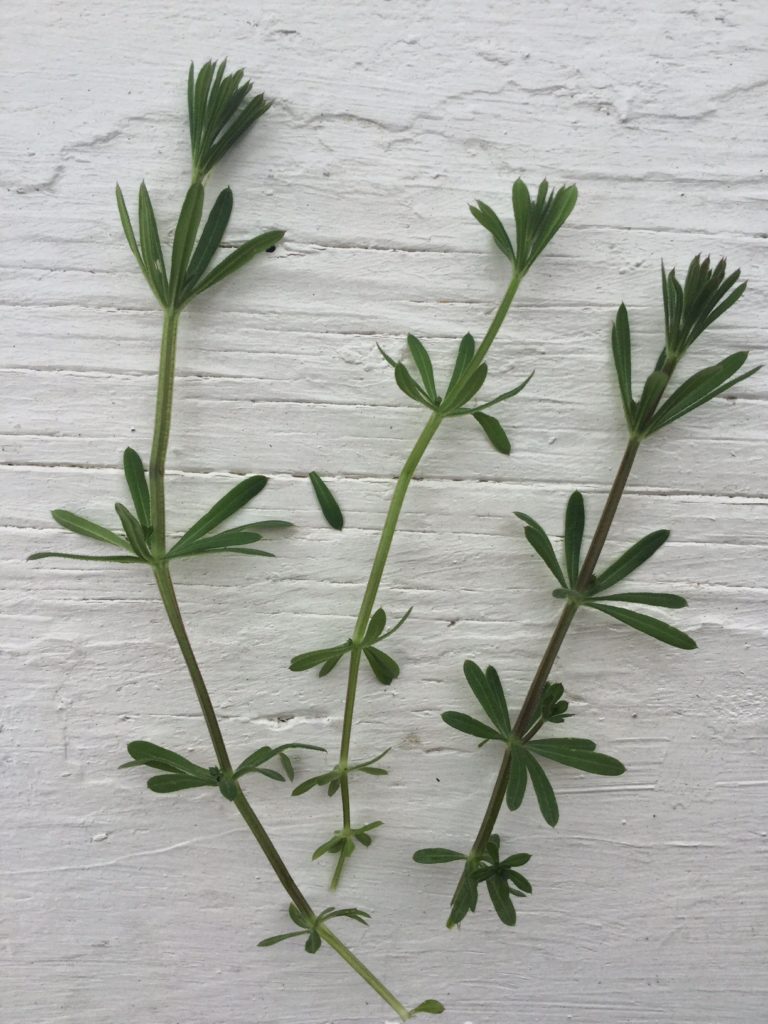
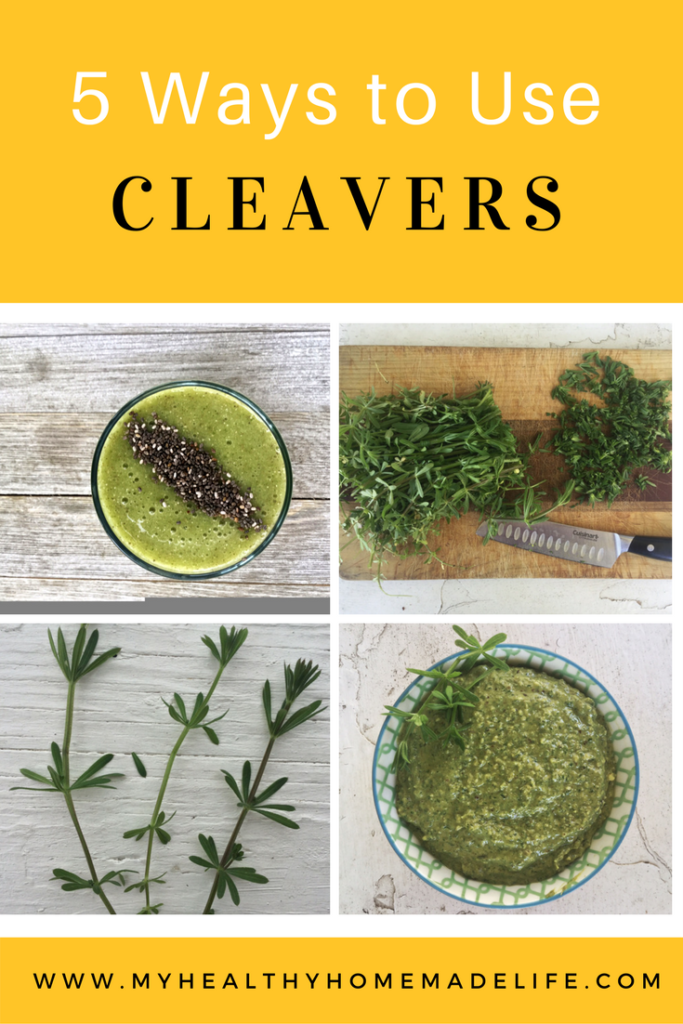


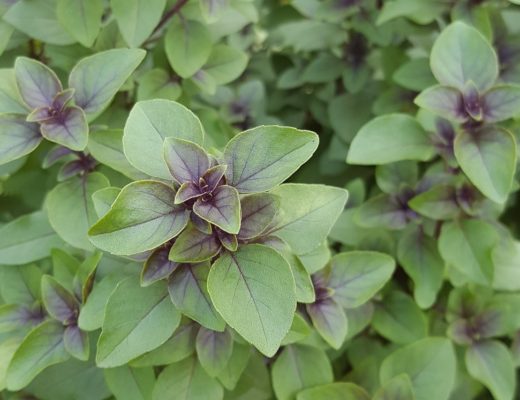
31 Comments